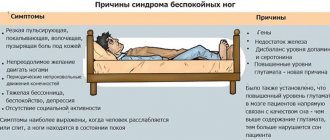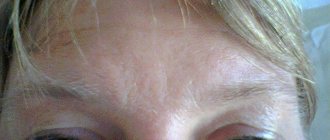General information
So, what is Guillain Barre syndrome? This disease was discovered about 100 years ago, however, the reasons for its development are still not known for certain. Doctors have only some idea about the possible factors that provoke the disease.
The disease itself is quite severe and classified as neurological. In addition, the disease is rare and occurs in only 2% of the world's population. The nature of the disease is as follows: the immune cells of the human body, for some unknown reason, begin to negatively perceive human nerve cells, creating special antibodies against them that attack neurons. As a result of the death of neurons or destruction of the myelin layer, the nervous system begins to malfunction, which manifests itself in the form of paralysis.
There is no so-called risk group for this disease, since people of any age are susceptible to it. Besides. The disease can also develop in children.
What kind of pathology is this?
Guillain-Barré syndrome is considered a serious disease of the peripheral nervous system and often causes paralysis. It can even develop in infants starting at four months. The peculiarity of the disease is that its occurrence is provoked by the body itself and also cures it.
What causes Guillain-Barre syndrome has not been fully studied. In most cases, the development of the disease occurs as a result of an acute infectious disease. There is an opinion that it is caused by a filtering virus, unknown to science. According to many scientists, the pathology is of an allergic nature. In any case, Guillain-Barré syndrome is an autoimmune disease in which immune reactions occur at the cellular level that contribute to the destruction of nervous tissue.
Causes
The main reasons for the development of this serious disease are not fully known, and, as mentioned earlier, there are only guesses and assumptions regarding certain factors. Nevertheless, factors that may provoke the development of Guillain Barre syndrome include:
- traumatic brain injuries;
- infectious diseases that occur with complications;
- diseases affecting the upper respiratory tract;
- complications after vaccination or due to surgery;
- hereditary predisposition;
- herpetic diseases;
- HIV;
- Infectious mononucleosis.
All of the above is only a possible factor provoking the development of inflammatory polyneuropathy. What does it mean? This means that in patients who sought help with a similar diagnosis, the presence or fact of transmission of a particular disease was revealed.
What are the causes of the disease?
As already mentioned, the disease is not so well studied to consider specific causes. However, there are assumptions according to which one can speculate about what causes the disease. The autoimmune nature of the disease means that the human immune system is protected against the human body itself. That is, antibodies are produced to microparticles of the nervous system located in the sheath of the nerves. Thus, the nervous tissue of the peripheral system is destroyed. At the same time, the organs of the central nervous system (brain and spinal cord) continue to function and are not subject to destructive processes.
Based on the theory about the autoimmune nature of Guillain-Barre syndrome, scientists have suggested that the disease is triggered by viruses. When a strong virus enters the body, the immune system begins to fight it by producing antibodies. This process can captivate the immune system, so it begins to produce aggressive cells towards its own body too. The peripheral nervous system is most vulnerable in this case. Such a failure is the exception rather than the rule, but it still occurs. In science it is called molecular mimicry. Among the viruses that can provoke mimicry, herpes cytomegalovirus and Einstein-Barr virus are especially dangerous. Very rarely, the disease can occur after surgery or vaccination.
Guillain-Barré syndrome is accompanied by significant metabolic disorders. During tests, an increased concentration of protein in nerve cells is detected. The composition of the blood also changes - the balance of pro- and antioxidants, as well as other important components, is disrupted. The changes entail a weakening of the protective functions of nerve cells. As a result, the roots of the peripheral nerves are destroyed.
Symptoms
The disease begins to manifest itself with increasing weakness in the lower extremities. Gradually, this weakness begins to rise to the upper extremities. The patient's legs are the first to suffer; this condition can last about 3 weeks, after which similar symptoms begin to appear on the feet and at the same time the hands suffer.
However, in addition to weakness, a sick person may experience the following symptoms:
- difficulty swallowing any food, including liquid food;
- increased sweating;
- pressure surges;
- disorders in the cardiovascular system;
- paralysis of facial muscles;
- visual problems (squint, double vision);
- lack of coordination when walking;
- uncontrolled urination.
However, the most dangerous symptom, due to which the patient must be hospitalized, is possible disturbances in the respiratory system. A person may simply need artificial pulmonary ventilation (ALV), otherwise a fatal outcome is possible.
Varieties
Guillain-Barré syndrome has a clear classification, and depending on the nature of the lesion it can be:
- Demyelinating.
- Axonal.
- Motor-sensory.
The demyelinating variant of the disease is the most common and accounts for approximately 75–80% of the total. This form received its name due to the destruction of the myelin layer in nerve cells. Myelin is the primary protective layer, so the symptoms are not very pronounced. So, the patient may have minor motor and sensory disturbances.
The axonal form of the disease represents damage to axons. It is characterized by mild weakness in the limbs, possibly occurring without motor impairment. This type of disease is most common in children.
An axon is a long cylindrical extension of a nerve through which nerve impulses are transmitted.
The motor-sensory type of the disease is the most severe form of the disease, since along with weakness in the limbs the patient experiences severe motor lesions, which are also difficult to treat.
Also, there is a classification, depending on the course:
- Gradual spread.
- Spicy.
Gradual is characterized by long-term development, and acute, on the contrary, is rapid.
Types of syndrome
There are three clinical types of Guillain-Barré syndrome:
- demyelinating;
- axonal;
- Miller-Fisher syndrome.
The first option is more common, resulting in destruction of the myelin sheaths of peripheral nerves. Axonal processes are not affected.
The demyelinating process leads to inhibition of impulse conduction and provokes reversible flaccid paralysis. The anterior roots of the spinal cord are predominantly affected. This option is considered a typical type of disease.
With the axonal variety, axon cylinders are also affected, resulting in severe paralysis and paresis. This type is more severe, as a result of which motor functions are not always fully restored.
Miller-Fisher syndrome manifests itself as paralysis of the eyeballs, cerebellar abnormalities, and loss of reflexes. Paresis is less pronounced.
Guillain-Barré syndrome is a temporary process. This means that sooner or later the autoimmune response subsides and the recovery process begins even without treatment. However, all types of the disease require active surveillance and intensive medical care.
Read also…. Exercises with a fitball (gymnastic ball): for what conditions are they useful, the benefits of such exercises, complexes for the back
Diagnostics
Diagnosis of this disease is a serious process that requires an integrated approach. At the initial stage, the patient’s medical history is collected to build a primary picture and differentiate this disease from other ailments.
So, the neurologist must determine that he is dealing specifically with Guillain-Barre syndrome, and not with similar symptoms of polyneuropathy or stroke.
However, sometimes, based on external manifestations alone, this cannot be done; it is for this reason that a comprehensive diagnosis is necessary, which includes:
- general and biochemical blood test;
- general urine analysis;
- collection of cerebrospinal fluid;
- electromyography;
- 24-hour blood pressure monitoring;
- ECG;
- spirometry;
- peak flowmetry;
- pulse oximetry.
The doctor also conducts special neurological studies. In addition, consultations with other specialists may be scheduled - an obstetrician-gynecologist and an immunologist.
As a rule, the signal for prescribing a full range of studies is the absence of reflexes in one or more than one limb.
Treatment and care
The following are recommendations for the treatment and care of patients with Guillain-Barré syndrome:
- Guillain-Barre syndrome is potentially life-threatening. Patients with Guillain-Barré syndrome are usually hospitalized and closely monitored.
- Symptomatic treatment includes monitoring breathing, heart rate and blood pressure. If breathing becomes compromised, the patient is usually placed on a ventilator and monitored for complications, which may include abnormal heartbeats, infections, blood clots, and high or low blood pressure.
- There is no cure for Guillain-Barré syndrome, but treatment can reduce the symptoms of Guillain-Barré syndrome and shorten their duration.
- Given the autoimmune nature of the disease, immunotherapy such as plasma replacement to remove antibodies from the blood or intravenous immunoglobulin is usually given during its acute stage. This treatment is most effective when given 7 to 14 days after symptoms begin.
- If muscle weakness persists after the acute stage of the disease, patients may require rehabilitation services to strengthen muscles and restore motor function.
Treatment
Treatment of Guillain-Barre syndrome is carried out only in a hospital, since the patient may require mechanical ventilation or other resuscitation measures.
The main areas of treatment are as follows:
- eliminating threats to human life and health;
- eliminating the cause of the disease;
- elimination of symptoms;
- rehabilitation.
Resuscitation measures are the basis for the treatment of this disease, since 30% of patients die precisely from concomitant symptoms. In addition to mechanical ventilation, the patient may be advised to catheterize the bladder and install a pacemaker to exclude sudden heart problems.
In addition, the patient requires daily care, since immobility causes the formation of bedsores on the body. Therefore, regular changes of body position are carried out at least once every two hours.
The cause of the disease, namely antibodies that attack nerve cells, are eliminated using a procedure called plasmapheresis. This operation is performed to remove these antibodies from the blood. Its frequency cannot exceed six times during the entire period of treatment, and the minimum acceptable interval between operations is one day.
As an auxiliary method of treatment, the introduction of immunoglobulin into the body is used, which also helps to reduce the number of harmful antibodies in the blood.
The symptoms of Guillain-Barré syndrome are relieved by various means. So, depending on the clinical picture, it may be:
- if there is an infection, antibiotics;
- medications to normalize heart function;
- drugs aimed at eliminating thrombosis in blood vessels;
- substances that improve metabolic processes (antioxidants);
- hormonal therapy.
The disease has a favorable outcome in 70% of cases, however, a person who has suffered from such an illness must undergo rehabilitation, which, depending on the severity of the illness, may include:
- massages
- medicinal baths
- physiotherapy
- Exercise therapy
- compress therapy (wax or paraffin)
- specialized diet
Classification of pathology
Polyradiculoneuropathy occurs in several clinical variants:
- The classic form of Guillain-Barré syndrome (acute inflammatory demyelinating polyneuropathy). Diagnosed in 60-90% of cases. Accompanied by paralysis of the limbs, insufficiency of the respiratory system, and decreased sensitivity.
- Acute motor and motor-sensory axonal neuropathy . Occurs in 20% of patients. The clinical picture is similar to the classical form, but the disease is more severe and more often leads to death.
- Miller-Fisher syndrome . Diagnosed in 2-3% of cases. It is characterized by paralysis of the muscles of the visual system, cerebellar ataxia, and the absence of natural reflexes.
- Acute cranial polyneuropathy . Detected in less than 1% of cases. Cranial nerves are involved in the pathological process.
According to the severity, GBS is divided into the following types:
- Easy . There is slight muscle weakness, but there are no motor impairments. The patient is completely independent.
- Average . Problems with movement appear, joint mobility decreases. The patient needs support to walk.
- Heavy . The patient is bedridden and requires assistance.
- Extremely heavy . Respiratory failure and cardiac dysfunction are observed. The patient needs emergency care.
Forecast
The prognosis for this disease is generally favorable. Thus, the mortality rate is only 5% of cases, despite the fact that child mortality from such a disease does not exceed 1%, and adults can reach up to 8%.
In most cases, death can occur as a result of failure of the respiratory system or a serious infectious disease.
After recovery, the patient does not retain any clinical manifestations, however, registration with a neurologist is mandatory, since the probability of relapse, although small (4%), is still present.
Prevention
There are no specific preventive measures against this disease; there are only a few recommendations that the doctor must inform the patient about.
Thus, any vaccination of a person who has had Guillain Barre syndrome is prohibited for a year, as this can cause a relapse of the disease.
If the syndrome was provoked by any vaccine, this vaccine becomes even more prohibited.
After a year has passed from the end of the disease, vaccination of the patient is possible, subject to justification of the feasibility of this vaccine.
So, Guillain Baret syndrome is a rare and serious neurological disease that can, not only ruin the patient’s life, but also simply stop it. So don’t neglect going to the doctor, because it may save your life. Treat yourself correctly!
Clinical course of Guillain-Barré syndrome
During the disease there are 3 stages:
- Prodromal;
- razgara;
- Exodus.
The prodromal period is characterized by general malaise, muscle pain in the arms and legs, and a slight increase in temperature.
During the height of the phase, all the symptoms characteristic of Guillain-Barre syndrome appear, which reach the peak of their development towards the end of the phase.
The outcome stage is characterized by a complete absence of signs of any infection, but is manifested only by neurological symptoms. The disease ends either with complete restoration of all functions or with disability.










